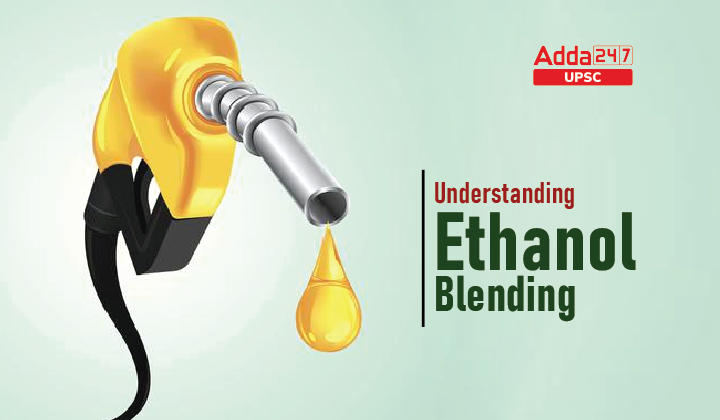Table of Contents
Understanding Ethanol Blending-Relevance for UPSC Exam
General Studies III- Conservation, environmental pollution and degradation, environmental impact assessment.
In News
Prime Minister Narendra Modi announced that India has achieved its target of blending 10% sugarcane-extracted ethanol in petrol, ahead of schedule while addressing the nation from the Red Fort on the 76th Independence Day.
What is Ethanol Blending?
- Blending ethanol with petrol to burn less fossil fuel while running vehicles is called ethanol blending.
- Ethanol is an agricultural by-product which is mainly obtained from the processing of sugar from sugarcane, but also from other sources such as rice husk or maize.
- Currently, 10% of the petrol that powers your vehicle is ethanol.
- Though we have had an E10 — or 10% ethanol as policy for a while, it is only this year that we have achieved that proportion.
- India’s aim is to increase this ratio to 20% originally by 2030 but in 2021, when NITI Aayog put out the ethanol roadmap, that deadline was advanced to 2025.
Significance
- Ethanol blending will help bring down our share of oil imports (almost 85%) on which we spend a considerable amount of precious foreign exchange.
- More ethanol output would help increase farmers’ incomes.
- The NITI Aayog report of June 2021 says, “India’s net import of petroleum was 185 million tonnes at a cost of $55 billion in 2020-21,” and that a successful ethanol blending programme can save the country $4 billion per annum.
First Generation and Second-Generation Ethanol
- With an aim to augment ethanol supplies, the government has allowed procurement of ethanol produced from other sources besides molasses — which is first generation ethanol or 1G.
- Ethanol can be extracted from materials such as rice straw, wheat straw, corn cobs, corn stover, bagasse, bamboo and woody biomass, which are second generation ethanol sources or 2G.
World Scenario
Though the U.S., China, Canada and Brazil all have ethanol blending programmes, as a developing country, Brazil stands out. It had legislated that the ethanol content in petrol should be in the 18-27.5% range, and it finally touched the 27% target in 2021.
India’s Goal
- At the time of the NITI Aayog report in June last year, the industry had committed to the government to make all vehicles E20 material compliant by 2023.
- This meant that the petrol points, plastics, rubber, steel and other components in vehicles would need to be compliant to hold/store fuel that is 20% ethanol.
- Without such a change, rusting is an obvious impediment
- Society of Indian Automobile Manufacturers says that the industry has committed to becoming E20 engine compliant by 2025, which means that engines would need to be tweaked so as to process petrol which has been blended with 20% ethanol.
- Even though the industry is recovering from the economic losses bought on by the pandemic, it is bound to make some change to comply with India’s promise for net-zero emissions by 2070.
Challenges
- Optimization of engine for higher ethanol blends and the conduct of durability studies on engines and field trials before introducing E20 compliant vehicles.
- Storage is going to be the main concern, for if E10 supply has to continue in tandem with E20 supply, storage would have to be separate which then raises costs.
- It does not reduce the emission of another key pollutant — nitrous oxide.
- The water needed to grow crops for ethanol is another debating point- a litre of ethanol from sugar requires 2,860 litres of water.
- Given the uncertainty about future production, India may not find it easy to simultaneously strengthen domestic food supply systems, set aside adequate stocks for lean years, maintain an export market for grains, and divert grain to ethanol at the expected rate in coming years, and this is an issue that warrants continued monitoring




 TSPSC Group 1 Question Paper 2024, Downl...
TSPSC Group 1 Question Paper 2024, Downl...
 TSPSC Group 1 Answer key 2024 Out, Downl...
TSPSC Group 1 Answer key 2024 Out, Downl...
 UPSC Prelims 2024 Question Paper, Downlo...
UPSC Prelims 2024 Question Paper, Downlo...
